Arizona Capitol Museum
Introduction
Text-to-speech Audio
Images
Construction of the original Arizona Capitol Building began in 1898. Its final expansions were completed in 1938.
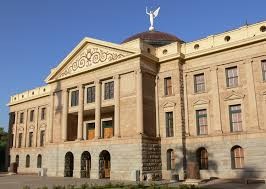
Capitol Building Rotunda
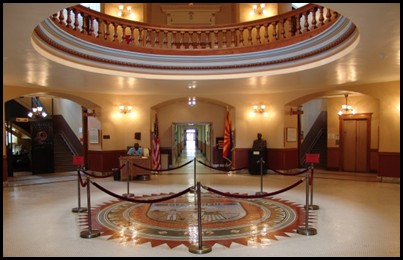
National Register of Historic Places designation plaque.
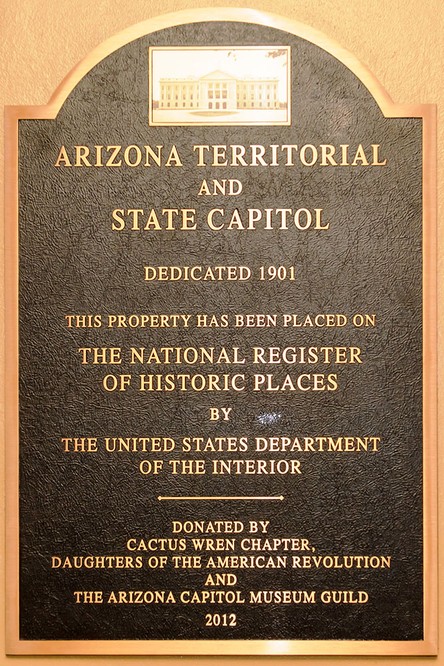
Flag from the U.S.S. Arizona.
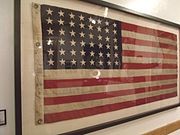
A piece of the U.S.S. Arizona.
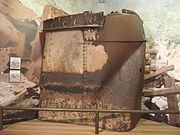
Backstory and Context
Text-to-speech Audio
The building was created as part of an effort to demonstrate that the Arizona Territory was ready for statehood. A design contest was won by James Riely Gordon, whose original plan called for the Capitol to be much larger, with a more prominent rotunda and large wings for both houses of the legislature on each side of the current building. Funding deficits meant the project had to be reduced, so the legislative wings were discarded from the plan and a small lead-alloy top substituted for Gordon's decorative dome.
Construction of the Capitol began in 1898, and it began operation in 1901. In 1918 and 1938, expansions were added on the west side of the building, which had the same architecture and increased the total square footage from the original 40,000 to a final 123,000. It was home to the Legislature until 1960, when the current house and senate buildings were constructed, and the Governor's Office until 1974, when the executive tower was built. The state at that time had a plan of converting the original Capitol into a museum dedicated to Arizona's history. The original opening of the Arizona Capitol Museum was announced by Governor Bruce Babbitt at his inauguration in 1978, and hosted over 40,000 schoolchildren in that first year in 1979. After a restoration, the building was re-opened as a museum in 1981. In the 1990s, more than $3 million was spent to renovate the Capitol and rooms were restored to their original design. Again, due to budget deficits, construction was stopped on a few rooms on the third floor and they remain incomplete. The Capitol is listed on the National Register of Historic Places.
Museum Exhibits, Events and Programs focus on the evolution of Arizona from Territory to State. Topics include: Arizona state symbols, Arizona Approaching statehood, and the Arizona Constitution. Visitors can enter the Historic House Chamber where the Arizona Constitution was written and sit at the desks. The Governor's office on the second floor has a wax figure of Arizona's First State Governor, George W.P. Hunt, and an exhibit that includes a flag used by the Roughriders.
One impressive display shows the enormous silver and copper punchbowl service from the USS Arizona, as well as a bronze sculpture that was ensconced outside the Admiral's stateroom and used as a centerpiece at state dinners wherever the USS Arizona was docked. Both of these historical artifacts survived the sinking of the Arizona because they had been removed from the ship for cleaning prior to the attack on Pearl Harbor. The punchbowl service is the only one of its kind and is composed of etched copper panels depicting desert scenes set into a silver bowl ornamented with mermaids, dolphins, waves, and other nautical themes.
Of particular interest is the display of a collection of gifts received by Arizona as part of the "Merci Train" sent by France to the United States following World War II. The French wanted to thank America for sending 250 railroad cars full of fuel, oil, and food in 1948 during a time that the European countries were devastated by World War II. Tens of thousands of French citizens donated objects to be sent to the United States and it was decided that because the outpouring of goods was so great, one boxcar would be sent to each state with one being shared between the District of Columbia and the Territory of Hawaii. All of the items were to be loaded in "Forty and Eight"-type boxcars, named after the sign painted on them which stated that 40 men or 8 horses could be loaded inside. Each car was to be adorned with the coats of arms of all of the provinces of France. The capitol building displays work by the noted Arizona artist Lon Megargee.
In the fall of 2016, the museum launched a rental program for private rental. For the first time in history, this historic building will be the backdrop for receptions, business dinners and weddings.
